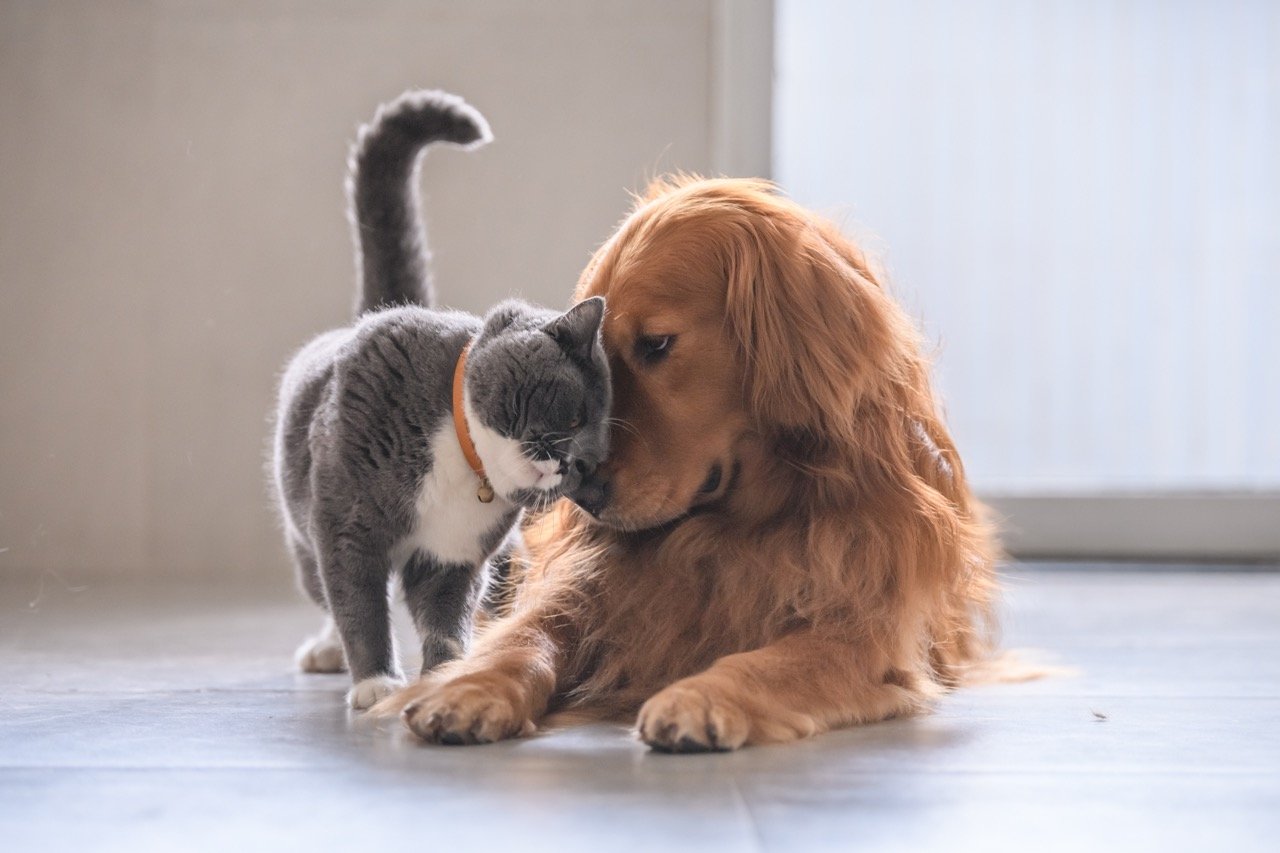Tips and Guidelines For Introducing Your Dog to New Cat
We've all seen the photos and videos on Instagram and Tik Tok where a dog and cat play together like best friends. When you see this, you can't help but think about how cute it is and how you wish your dog had a friend like that. This, in turn, might lead you to go to a local pet shelter or pet store and purchase a new cat.
While there's a chance that your dog and cat will become best friends, there's also a chance that they won't get along at all. While there are various reasons why the meet and greet could go one way or the other, it often comes down to how you initially introduce your dog to a new cat. If you want to make this introduction the right way to ensure that your animals get along, you've come to the right place.
- The Obstacles of Introducing Dogs and Cats
- Use the Closed Door Feeding Trick
- Making the Initial Introduction
- Don't Leave Them Alone Together
- Make Sure Your Dog Listens to You
- Give the Cat Free Rein First
- Let Them Play Together Under Supervision
- Proceed With Caution

The Obstacles of Introducing Dogs and Cats
While there's an ongoing stereotype that dogs and cats are mortal enemies, this isn't always the case. In many instances, dogs and cats live together in the same household in perfect harmony. While having this happen largely depends on the personalities and temperaments of either pet, how you introduce them to one another will also have a significant effect.
The reason that dogs and cats don't always get along isn't because of some ancient blood feud. It's because dogs and cats are territorial, playful, and crave attention. Therefore, when you introduce a new cat to your dog, who's used to having you and your home all to themself, they aren't always happy. Additionally, if your dog is unfamiliar with cats, there's a good chance they'll put them in the same category as squirrels and rabbits and want to chase them.
In addition to scaring the living daylights out of your cat, dogs are more than capable of purposefully or accidentally killing your new cat while they chase. This can happen because your dog mistakes them for prey or plays too rough with the cat. For these reasons, a slow and controlled approach is the best way to introduce your dog to a new cat.
Use the Closed Door Feeding Trick
Rather than starting with a face-to-face meet and greet, you should keep your dog and cat separate for several days. Ideally, keep your cat in a room behind a closed door but adjacent to where your dog hangs out. This will allow them to get familiarized with each other's scents and sounds.
You should also place their feeding bowls close to one another but on opposite sides of the door. Because eating is something that both animals enjoy, this will create a common bond and help when you introduce them face-to-face. You can also rub your dog and cat with a blanket or towel, then give it to the opposite animal to swap scents.

Making the Initial Introduction
Once your dog and cat have had time to get familiar with each other's scents and sounds, you're ready to make the initial introduction. It's vital that you keep your dog on a leash the entire time and keep them restrained so they don't lunge at the cat and scare or hurt them. It's also a good idea to make early introductions in an open, general-use area. If you introduce them in your cat's or dog's domain, they may feel territorial and protective.
Stop Meetings That Lead to Fear or Aggression
If at any point your dog or cat starts to show fear or aggression, you should separate them immediately. Fearful or aggressive behavior can be tough to put a stop to if you let it become a habitual thing. Taking your dog for a walk or to the park before allowing them to meet your cat is also a good idea so they are more relaxed.
Don't Leave Them Alone Together
At no point during the initial introductions should you leave your dog and your cat alone together. In some instances, if you have an overly aggressive dog, it might never be ok to leave them alone together. It all depends on how they get along and your dog's temperament.
Make Sure Your Dog Listens to You
If you've owned your dog for a while, they should have a good handle on basic commands such as "come," "down," "stay," and so on. If they don't, ensure your dog will respond to your commands before introducing them to your cat.
Give the Cat Free Rein First
Before letting both animals off-leash together, allow your cat to explore your dog freely. There's infinitely less chance of your cat hurting your dog than there is of your dog hurting your cat. Additionally, your cat will likely be far more apprehensive and afraid of meeting your dog than vice versa. Therefore, giving your cat free rein to explore and smell your dog gives them a sense of control and independence.
Let Them Play Together Under Supervision
Once you're convinced that your dog isn't going to try to hurt your cat, you can let them off leash. However, you must do this in a controlled environment where you are never more than a few yards away from your dog. It only takes a momentary lapse in judgment or attention for them to do something that will scar your cat for life.
Proceed With Caution
It's important to remain cautious and patient during the cat-dog introductory process. It can take weeks or even months until you feel comfortable letting your pets play together in an off-leash environment. You should never rush the process or force a meeting if either party seems irritated, fearful, aggressive, or simply not in the mood.
Most importantly, it's vital that you have realistic expectations about the situation. There's a chance that your dog and cat will never become the Instagram pals you want them to be or that they'll get along. Therefore, for the good of both of your pets, you should proceed with caution and never leave the two alone together unless you have confidence that they'll get along when you aren't around.




